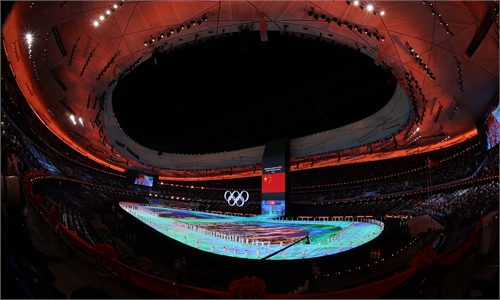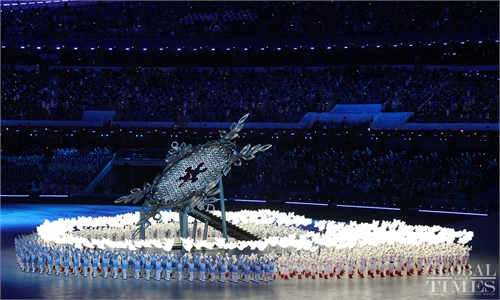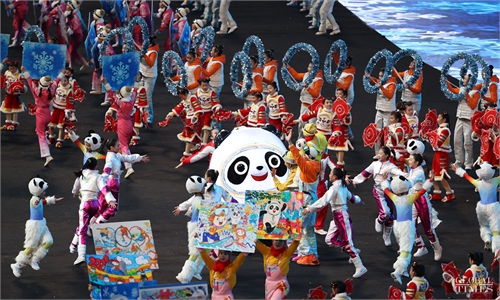Cauldron lighting at Beijing Winter Olympics reflects Chinese philosophy of ‘seeing the world through tiny details:’ director Zhang Yimou

Photo: Li Hao/GT
One of the many highlights of Friday evening's Beijing 2022 Winter Olympic Games opening ceremony is the part when the Olympic flame was lit - a session that signifies the official opening of the grand sports event, and the one where every host strives to make the best and most unique of.
Beijing's Olympic flame lighting session, directed by renowned Chinese director Zhang Yimou, however, was quite different from what people have expected: instead of "lighting up the fire," there was no ignition; and instead of the "burning fires," there was only "micro-fire." It conveyed the concept of low-carbon, environmental-friendly ideas, the director said, which reflected the Chinese philosophy of "knowing autumn comes by one leaf."
"I believe that the most important part is the lighting of the Olympic flame of the main torch, which is also highly anticipated and is where directors all over the world are competing in showing their creation," Zhang told China Central Television in an exclusive interview.
"So we want to stress, in the session, the concept of new-era and the theme of 'Together for a Share Future,'" Zhang said, noting that such an idea conceived the large snowflake consisting of all 90 small flakes with the participating country names written on top.
Looking back at the history of previous Olympic Games, the main torches of all the host countries were designed with their cultural elements, and not a single one with all the names of participating countries placed on it. "This is a torch shared by all, so light and romantic, and has never been thought of before," Zhang noted.
Another innovation lies in the way the flame was "lit." When the last torchbearers came in, they just put their torches there instead of igniting any new larger flames, indicating the Olympic spirit of passing on the legacy until today, Zhang noted.
It is worth noting that one of the two last torchbearers was an athlete from Altay, Northwest China's Xinjiang Uygur Autonomous Region, which is known as China's "snow capital" and the "paradise for ski lovers."
The last stick of the torch, which has only a faint, small flame, reflects a low-carbon concept, a great surprise to all viewers. "No show-offs, direct and simple, this is today's Chinese people and their cultural confidence. In this way they tell the China story of how we are all one family that loves and protects the environment."
It reflected the traditional Chinese philosophy of seeing the world from a tiny detail. "Chinese speak of a mood, an atmosphere, and it's actually very romantic… the torch ignition this time can be described as 'knowing autumn comes by one leaf,' as you see the whole, great Olympic spirit beneath the small fire, and it's beautiful and poetic," said Zhang, who also directed the sensational 2008 Beijing Summer Olympics.
Such a "bold" idea, however, was nearly rejected by the International Olympic Committee (IOC). Recognizing the low-carbon concept, the Beijing Organizing Committee sent a special team to the IOC headquarters in Switzerland to persuade them to accept the idea.
As the IOC saw the recording of Zhang who illustrated the idea of the micro-fire and the concept behind it, they finally agreed despite the great difference with previous ones. Zhang was relieved, saying, "They said as long as there is fire."
The opening ceremony of the Beijing Winter Games was held on Friday, which falls on the same day as "lichun," a special festival in traditional Chinese calendar that divides a year into 24 solar terms. Lichun signifies the beginning of spring, of growth, hope, and solidarity.
Global Times




